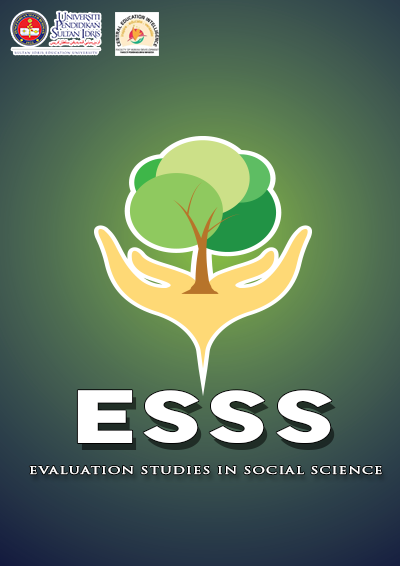Understanding Borderline Personality Disorder and Depression: A Case Formulation
DOI:
https://doi.org/10.37134/esss.vol4.1.3.2023Keywords:
borderline personality disorder, depression, case formulationAbstract
The co-occurrence of depression and borderline personality disorder (BPD) complicates the formulation thus it must be comprehensive to accurately inform an effective treatment plan. The case is TSN, 22-year-old Malay woman who sought psychological help for having recurrent depressed mood and self-harm. Mood assessment indicated high severity of BPD symptoms, moderate depressive symptoms, and mild anxiety. We formulated the case based on 4P biopsychosocial model, Crowell’s biosocial development model of BPD, and Beck and Bredemeier’s unified model of depression. TSN was temperamental and impulsive as a child. Parental invalidating responses and neglectful environment were reported. The loss of close friend had precipitated BPD traits, which exacerbated by multiple interpersonal losses thereafter. Coping with losses using ineffective strategies have gradually resulting depressive symptoms in TSN. We concluded that BPD traits, rather than depression, had triggered and maintained her depressed mood, thus it is important to focus on treating the BPD psychopathology.
Downloads
References
Beck, A. T., & Bredemeier, K. (2016). A unified model of depression: Integrating clinical, cognitive, biological, and evolutionary perspectives. Clinical Psychological Science, 4(4), 596–619. https://doi.org/10.1177/2167702616628523
Beck, A. T., Steer, R. A., Ball, R., & Ranieri, W. F. (1996). Comparison of Beck depression inventories -IA and -II in psychiatric outpatients. Journal of Personality Assessment, 67(3), 588–597. https://doi.org/10.1207/s15327752jpa6703_13
Crowell, S. E., Beauchaine, T. P., & Linehan, M. M. (2009). A biosocial developmental model of borderline personality: Elaborating and extending Linehan’s theory. Psychological Bulletin, 135(3), 495–510. https://doi.org/10.1037/a0015616.A
Dell’Osso, B., Berlin, H. A., Serati, M., & Altamura, A. C. (2010). Neuropsychobiological aspects, comorbidity patterns and dimensional models in borderline personality disorder. Neuropsychobiology, 61(4), 169–179. https://doi.org/10.1159/000297734
Hepp, J., Lane, S. P., Carpenter, R. W., Niedtfeld, I., Brown, W. C., & Trull, T. J. (2017). Interpersonal problems and negative affect in borderline rersonality and depressive disorders in daily life. Clinical Psychological Science, 5(3), 470–484. https://doi.org/10.1177/2167702616677312
Koenigsberg, H. W., Anwunah, I., New, A. S., Mitropoulou, V., Schopick, F., & Siever, L. J. (1999). Relationship between depression and borderline personality disorder. Depression and Anxiety, 10, 158–167. https://doi.org/10.1002/(SICI)1520-6394(1999)10:4<158::AID-DA4>3.0.CO;2-B
Levy, K. N., Edell, W. S., & McGlashan, T. H. (2007). Depressive experiences in inpatients with borderline personality disorder. Psychiatric Quarterly, 78(2), 129–143. https://doi.org/10.1007/s11126-006-9033-8 https://medic.upm.edu.my/dokumen/FKUSK1_MJMHS_2011V07N1_OP11.pdf
Newton-Howes, G., Tyrer, P., Mulder, R., & Dekker, J. (2013). Influence of personality on the outcome of treatment in depression: Systematic review and meta-analysis. Journal of Personality Disorders, 28(4), 577–599. https://doi.org/10.1521/pedi_2013_27_070
Soloff, P. H., & Fabio, A. (2008). Prospective predictors of suicide attempts in borderline personality disorder at one, two, and two-to-five year follow-up. Journal of Personality Disorders, 22(2), 123–134. https://doi.org/10.1521/pedi.2008.22.2.123
Downloads
Published
How to Cite
Issue
Section
License
Copyright (c) 2023 Michelle Poh Kin Choong, Azizah Othman, Mohamed Faiz Mohamed Mustafar

This work is licensed under a Creative Commons Attribution-NonCommercial-ShareAlike 4.0 International License.





